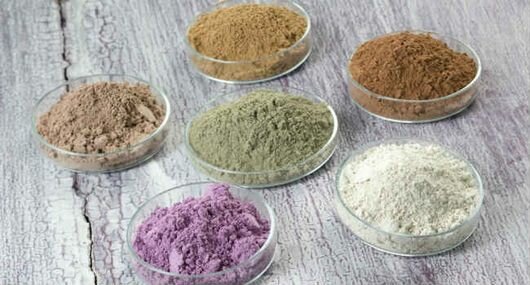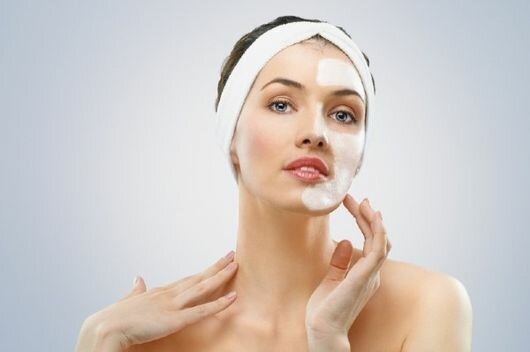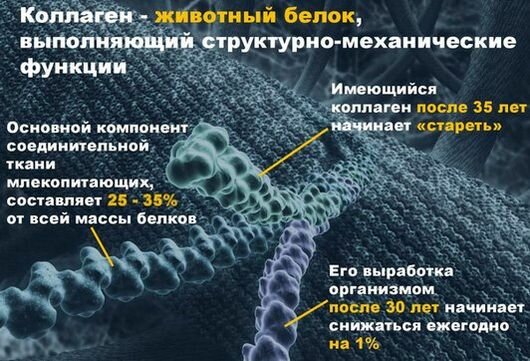The benefits of facial peeling are to renew and cleanse the skin. The harm from its implementation is reduced to side effects that disappear after 1-4 weeks. Updating the epidermis allows you to even out skin tone, give it a healthy glow and smooth out unevenness of the relief.
- Skin peeling – what is it
- The effect of peeling on the skin
- Indications for
- Benefit or harm
- Contraindications
- Types of peeling by exposure depth
- Chemical peeling
- Mechanical peeling
- Ultrasonic Peeling
- Fruit Acid Peeling
- Glycolic peeling
- Salicylic peeling
- Hardware Peeling
- Retinoic Peeling
- Calcium Chloride Peeling
- Amber Peeling
- Jessner Peeling
- How to choose the right procedure
- Recovery period after peeling. How to care for your skin
- Video: face peeling. Benefit and harm
Skin peeling – what is it
Dead cells accumulate on the surface of the skin, which complicate the deep penetration of oxygen. Its deficiency causes a slowdown in blood circulation. The complexion becomes dull, premature wrinkles appear. The stratum corneum prevents the access of cosmetic components to the midline of the skin – the dermis. She suffers from a lack of moisture and nutrients. 

Facial peeling, the benefits and harms of which are correlated with the severity of side effects, must be selected by skin type. For sensitive skin, soft exfoliation is recommended, without damaging the tissue. Dense skin requires potent formulations with a high concentration of active ingredients.
The effect of peeling on the skin
During peeling, deep cleansing of the epidermis occurs. Its upper layer, consisting of keratinized cells, is removed. This speeds up tissue regeneration. As a result, the skin is smoothed and younger. The metabolic processes in the tissues are normalized, which allows to reduce the production of fat. Pigmentation brightens, and blood circulation increases. The skin tone is leveled. 

Scrubs act on the surface of the skin mechanically. They include hard particles that remove dead horn cells. Chemical components soften the upper layer of the skin and dissolve deep pollution. A hardware technique removes non-viable cells by ultrasonic and laser radiation.
Indications for
The procedure is aimed at solving a number of problems, therefore, indications are defined for it:
- Age-related changes;
- Unhealthy complexion;
- Acne scars and scars and uneven skin;
- Pigment and stagnant spots;
- Papillomas;
- Dryness and peeling;
- Seborrhea
- Hyperkeratosis


To achieve a lasting result, a course of procedures is required.
Benefit or harm
Facial peeling, the benefits and harms of which depend on the depth of exposure to the skin, has positive effects:
- Elimination of wrinkled mesh;
- Lightening pigmentation and post-acne;
- Healthy complexion
- Normalization of the sebaceous glands;
- The narrowing and cleansing of pores;
- Long-term hydration;
- Elimination of hyperkeratosis, tuberosity and comedones;
- Strengthening skin turgor.


The deep effect of the renewing components on the dermis causes side effects.
Their manifestation is associated with harm from the procedure:
- Injury and skin burn;
- Thinning of the dermis, causing its increased sensitivity;
- Depletion of the cellular resource embedded in the hypodermis;
- Early aging
- The appearance of the vascular network;
- Reducing the protective barrier of the epidermis.
A negative reaction develops with abuse of peelings. It is enough to carry them 1-2 times a year.
Contraindications
Peeling can not be carried out with exacerbation of skin diseases.
Contraindications include:
- Herpes virus;
- Inflammation;
- Dermatitis
- Damage to the integrity of the skin;
- Allergy to the components of updating tools;
- Cardiovascular diseases;
- Broken blood coagulation;
- Diabetes;
- Oncological diseases;
- Pregnancy.
Skin diseases are a contraindication if they are found in the area of the procedure.
Types of peeling by exposure depth
The depth of peeling is determined by the degree of penetration of its components into the tissue.
There are 3 types of skin renewal:
- Superficial;
- Median;
- Deep.


The advantage of surface peeling is safety. It does not damage the skin. The procedure helps to cope with dryness and the first signs of aging. After cleansing, the pores narrow and a healthy glow appears.
Superficial renewal is effective for sensitive skin suffering from acne, oiliness or early wilting. It is achieved by exposure to fruit acids and scrub. With a middle peeling, the epidermal layer of the skin is removed. Her update begins at the basal level.
The procedure allows you to correct serious cosmetic defects:
- Dark spots;
- Deep wrinkles and creases;
- Age-related tissue ptosis;
- Cicatricial changes.
Median peeling is carried out with chemical acids, a laser or an abrasive nozzle.
Its advantage is enhanced tissue regeneration with a short recovery period. Rehabilitation takes no more than 2 weeks. 1 hour after the procedure, redness and swelling are formed on the face. Within a week, it looks annoyed. Dead tissue begins to exfoliate. After 7-10 days, new healthy cells form in their place.
Peeling for the face, the benefits and harms of which have become the subject of controversy among doctors, is called deep and is an analogue of plastic surgery. This effect is due to exposure to phenol or carbolic acid. The reason for medical criticism was the high toxicity of the substance, but for peeling it is used in a minimal amount.
Deep tissue renewal eliminates age-related changes that occur after 40 years.
The achieved effect lasts up to 10 years:
- Ptosis and bryl disappear;
- Deep wrinkles are smoothed out;
- Hyperpigmentation, moles and benign neoplasms disappear.
Phenol peeling is carried out in a hospital. The procedure takes about 48 hours. The full recovery period lasts 6 months.
Chemical peeling
Chemical peeling formulations cause burns when applied to the skin. Its intensity depends on the penetration depth of the active components. In case of damage in the tissues, the recovery process starts, the production of signaling molecules and enzymes is enhanced. In place of the burn, healthy, dense, defect-free skin is formed.
Following the renewal of dermal cells, new vascular compounds, fibroplasts and glycosaminoglycans are formed. The synthesis of elastic and collagen fibers deep in the dermis is enhanced. The skin becomes moisturized and acquires a uniform radiant color. Young skin requires surface peeling to prevent aging.
When it is used, gentle compounds that do not penetrate deeper than the upper layer o
f the epidermis.
After the procedure, there is no rehabilitation period. The components of the median peeling act at the level of the basement membrane. They eliminate age and age defects. The stratum corneum after application of the renewing composition is removed, which causes peeling and irritation . Side effects disappear on their own after 1 week. 

Facial peeling, the benefits and harms of which are caused by changes at the basal level, refers to deep procedures. It allows you to update the basement membrane to rejuvenate aging skin. The rehabilitation period is 6 months. During this period, peeling, hypersensitivity of the skin and discomfort remain.
The negative side of peeling is tissue damage, this causes a negative reaction on the face:
- Itching
- Blisters;
- Swelling;
- Exacerbation of inflammatory processes.
Before the procedure, anti-inflammatory therapy is needed to facilitate rehabilitation.



 Do not miss the most popular article in the rubric:
Do not miss the most popular article in the rubric: Facial massage according to the Japanese doctor Asahi Zogan.
Mechanical peeling
How are different types of mechanical peeling carried out:
- With surface mechanical peeling, the upper layer of the epidermis is removed with an abrasive nozzle, a fine-grained scrub and a natural brush. As a result of cleansing, the skin texture is smoothed, the pores are narrowed, and the face acquires a healthy color. The procedure does not injure the tissue, therefore it is harmless to the skin.


- Medium grinding is carried out with a diamond nozzle or a powerful air stream directing abrasive particles into the fabric. The technique copes with withering of the skin and scarring. During the week after the procedure, there is an increased sensitivity of the skin associated with its thinning.
- With deep grinding, the top layer of leather is completely removed with cutters. This allows you to get rid of pigmentation and deep wrinkles, tighten the oval of the face. Deep tissue injury leads to the risk of scarring.
Ultrasonic Peeling
Ultrasound peeling is effective for cleansing and strengthening tissues. The technique does not injure the skin, so there is no rehabilitation period. 

Safety does not preclude contraindications:
- Heart and blood diseases;
- The presence of a pacemaker and implants;
- Damage and skin diseases.
The ultrasonic nozzle loosens the epidermis. Its waves destroy bacteria, dissolve comedones and push pollution out of the pores. As a result of heating the subcutaneous tissue, the unevenness of the relief dissolves, and blood circulation increases.
Fruit Acid Peeling
Fruit acid peeling formulations are superficial. When applied to oily skin, the active ingredients increase its acidity. This leads to the death of bacteria and normalizes the production of sebaceous secretion. Fruit acids nourish and renew dry skin. Peeling and redness disappear on its surface.
Before using acids, the skin must be cleaned with foam. Layers of peeling are applied alternately with a brush. Their number is from 2 to 6, depending on the density of the epidermis. The composition remains on the face for 5-15 minutes, and then removed with an alkaline neutralizer.
The benefit of peeling is the renewal and nutrition of cells, and there is no harm to the face.


The procedure can be carried out at home . The concentration of acids in home remedies does not exceed 10%, so they do not require neutralization. Beauticians use 20-50% formulations that actively affect the stratum corneum. The effect of professional products lasts longer.
Glycolic peeling
Glycolic acid peeling destroys the intercellular contacts in the stratum corneum. This allows you to remove dead cells from its surface, increase blood flow and collagen synthesis. The formation of new tissues without defects. With frequent use, the skin becomes thin and sensitive, and the tendency to hyperpigmentation increases.
The peeling composition provokes a chemical reaction in the skin, which is contraindicated in the presence of:
- Inflammation;
- Herpes and infections on the face;
- Scratches, wounds and burns;
- Neoplasms.


Glycolic acid acts in the surface or middle layer of the epidermis. The degree of penetration is determined by the exposure time on the face. It is effective for superficial wrinkles and comedones. The procedure allows you to lighten surface pigment defects. It is carried out with dryness, peeling and loss of elasticity.
Salicylic peeling
The advantage of salicylic peeling is its high antibacterial activity. Salicylic acid cleanses pores from sebum and eliminates oily sheen. It brightens stagnant spots. The procedure is recommended for the treatment of seborrheic dermatitis, hyperkeratosis and acne. With frequent use, salicylic acid dries out the lipid layer.
The composition for peeling should include emollient fruit acids that reduce harm.
There are contraindications for the procedure:
- Burns, infections and tissue damage;
- Sensitive skin;
- Treatment with glycemic drugs.


With salicylic peeling, superficial skin renewal occurs . After removal of the stratum corneum, it becomes soft and elastic. The procedure is effective for early aging, fresh age spots and disorders in the sebaceous glands.
Hardware Peeling
The hardware technique differs in the degree of laser exposure to the tissue. In fractional thermolysis, a laser lattice directs light rays onto the basal layer of the dermis. Minimal patches of skin can be irradiated, not the whole face. In the process of laser dermabrasion, the cell layer of the epidermis absorbs the energy of the light beam, which leads to damage and evaporation of the treated tissues. 

Before the procedure, the cosmetologist applies a cooling gel to the face, and then treats the problem areas with a laser nozzle. Hardware peeling allows you to smooth wrinkles, tighten the oval of the face and completely remove pigmentation. The procedure eliminates spider veins. The laser beam penetrates deep into the tissues, smoothing deep scars and creases.
But for such a depth of exposure there are contraindications:
- Epilepsy;
- Diabetes;
- Exacerbation of chronic diseases.
The procedure is effective for combating aging, pigmentation, and relief. If abused, there is a danger of scarring.



 Do not miss the most popular article in the rubric:
Do not miss the most popular article in the rubric: Face fitness for lifting the face contour, rejuvenation, muscle tone. Master class from Elena Karkukli
Retinoic Peeling
The main component of retinoic or yellow peeling formulations is vitamin A. Interacting with fruit acids, it renews the upper layer of the epidermis. The effect of the procedure is not inferior to the middle peeling, while the recovery period is much shorter – 2 days. This is possible due to the gentle effect of retinoic acid, which does not harm the skin. 

Retinoic acid peeling is effective for aging skin. After the procedure, collagen fibers are restored, metabolic processes and blood flow are normalized. The problem of dry skin disappears, and the lack of nutritional components is compensated.
Contraindications to the yellow pilin are:
- Intolerance to Vitamin A, C;
- Fresh tan;
- Liver disease
- Age to 30 years.
Yellow peeling is recommended to combat wrinkles, peeling and enlarged pores. Its components strengthen the tissue, which allows you to simulate the shape of the face.
Calcium Chloride Peeling
Skin cells are subject to natural death. Their accumulation gives the face an unaesthetic appearance. Its relief becomes heterogeneous, the color fades, and the pores are polluted. The benefit of peeling with calcium chloride is to remove dead cells to solve cosmetic problems. During the procedure, microcracks form on the face. Healing cream helps to avoid harm.


Peeling is safe in the absence of contraindications:
- Rosacea;
- Skin subtleties;
- Acne;
- Allergies to active ingredients.
During the procedure, the beautician covers the face with cleansing foam, and on top of it puts a solution of calcium chloride. During massage, spools are formed that superficially clean the stratum corneum. They are washed off with water. You can perform such peeling at home. It is important to avoid the area around the eyes and lips. The procedure is effective for hyperkeratosis, comedones and increased production of sebum.
Amber Peeling
Succinic acid peeling strengthens the walls of blood vessels. It has a therapeutic effect in rosacea . Active components gently affect tissues without causing harm. Contraindications for the procedure are infections and inflammations on the face. 

The peeling composition is applied on cleansed and steamed skin. The exposure time of the components is from 5 to 15 minutes. Then the product is washed off with water, and a moisturizer is applied to the face. Due to the surface effects, there is no rehabilitation. The procedure is effective for edema, expression lines and dryness of the epidermis.
Jessner Peeling
The effect of Jessner peeling is based on lactic and salicylic acid, as well as resorcinol . Its components retain moisture in the skin, have a keratolic effect and whiten the face. Depending on the number of layers, the degree of exposure is superficial and median. After the procedure, itching, swelling and redness of the skin are observed. 

Jessner peeling has contraindications:
- Burns and skin injuries;
- Fungal diseases;
- Inflammation;
- Oncological and autoimmune diseases.
Before applying the peeling, the cosmetologist degreases the skin. The composition is distributed from the center of the face to the periphery with a brush. The number of layers is from 1 to 4. After 5 hours, the product must be washed off with water. The procedure is effective for seborrhea and acne. It allows you to lighten hyperpigmentation. After it is carried out, small wrinkles, chips and scars are smoothed out.
How to choose the right procedure
The choice of the type of peeling is based on the existing aesthetic problem and skin type. To get rid of acne, excess fat and contaminated pores, a chemical effect is necessary. With age-related changes, scars, hyperpigmentation, hardware treatment or median chemical peels are recommended. Ultrasound will help clear pores of black dots and narrow them.
Dry and sensitive skin improves fruit acids. Mechanical cleansing is indicated by a dense, fatty type epidermis. To maintain normal skin in a healthy condition, home peeling with
calcium chloride is suitable.
Recovery period after peeling. How to care for your skin
According to the recommendations of cosmetologists, facial after peeling involves:
- Refusal of decorative cosmetics;
- Refusal of cream until peeling forms on the face;
- Use of a healing cream for peeling and irritation;
- The use of sunscreen.


During the rehabilitation period, it is important not to injure the skin in order to prevent the formation of scars.
The harm from peeling for the face is negligible with proper skin care. The benefits in the form of a beautiful and healthy skin will become noticeable when the rehabilitation period ends.
Video: face peeling. Benefit and harm
Facial peeling, find out all the pros and cons of the procedure in the video clip:
Types of face peeling in the video:







